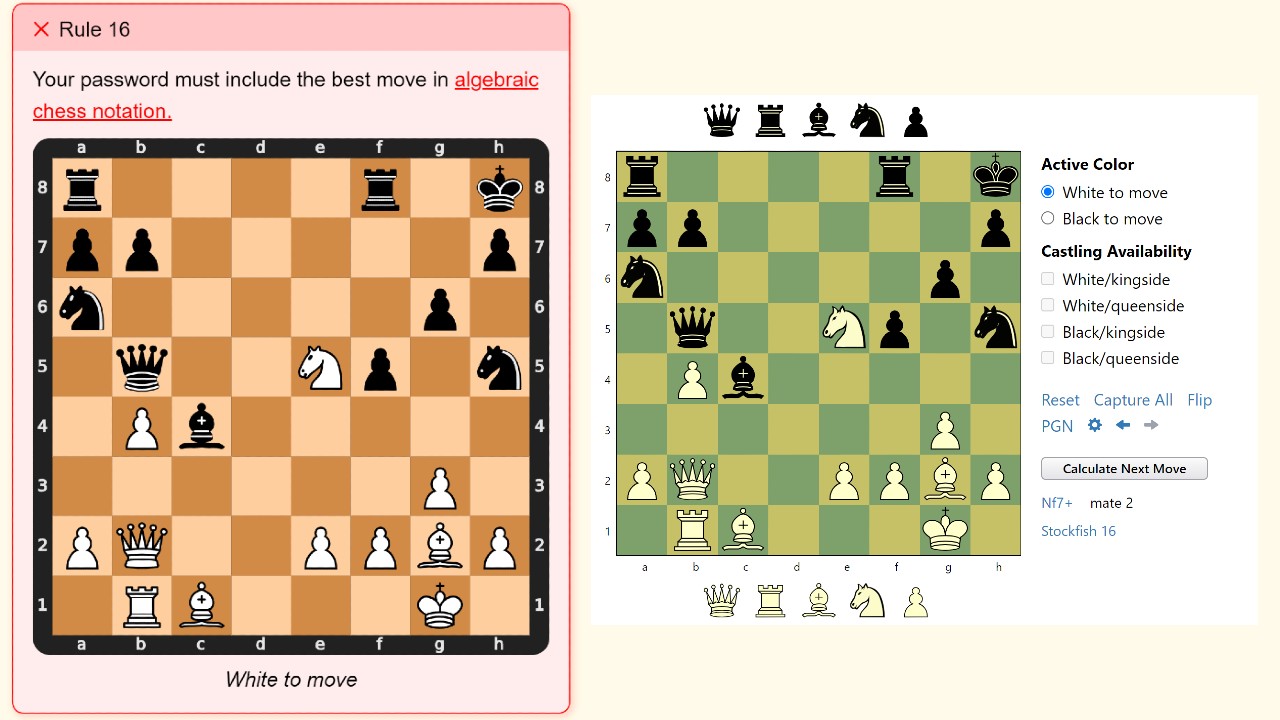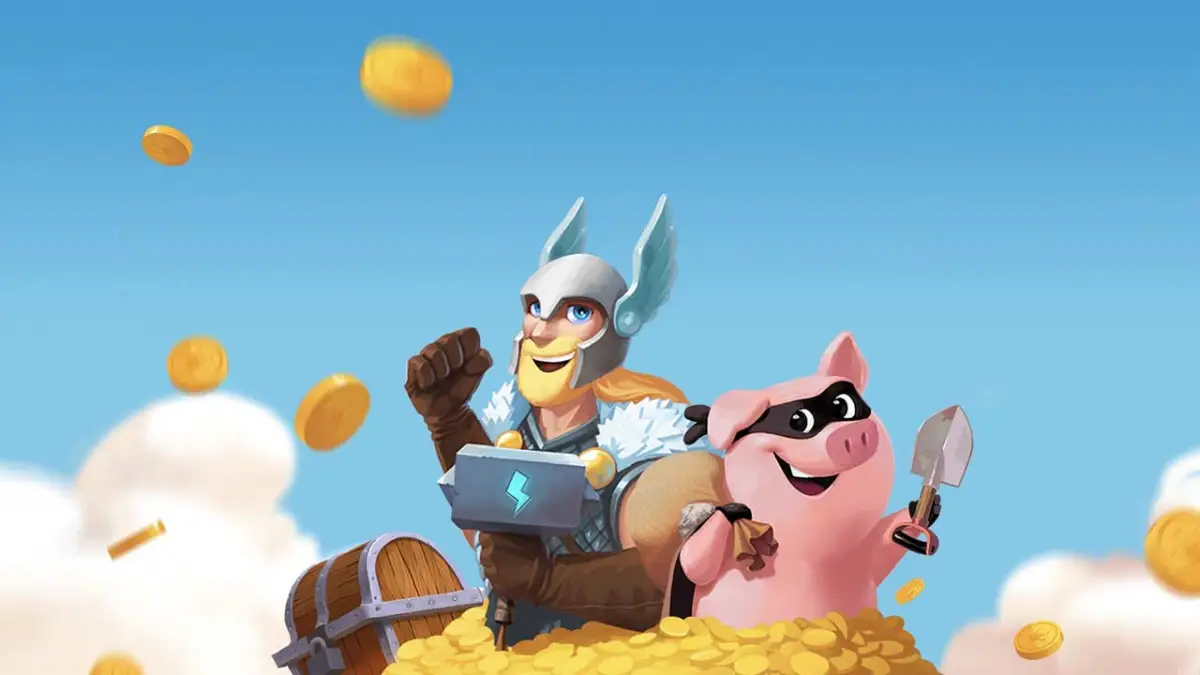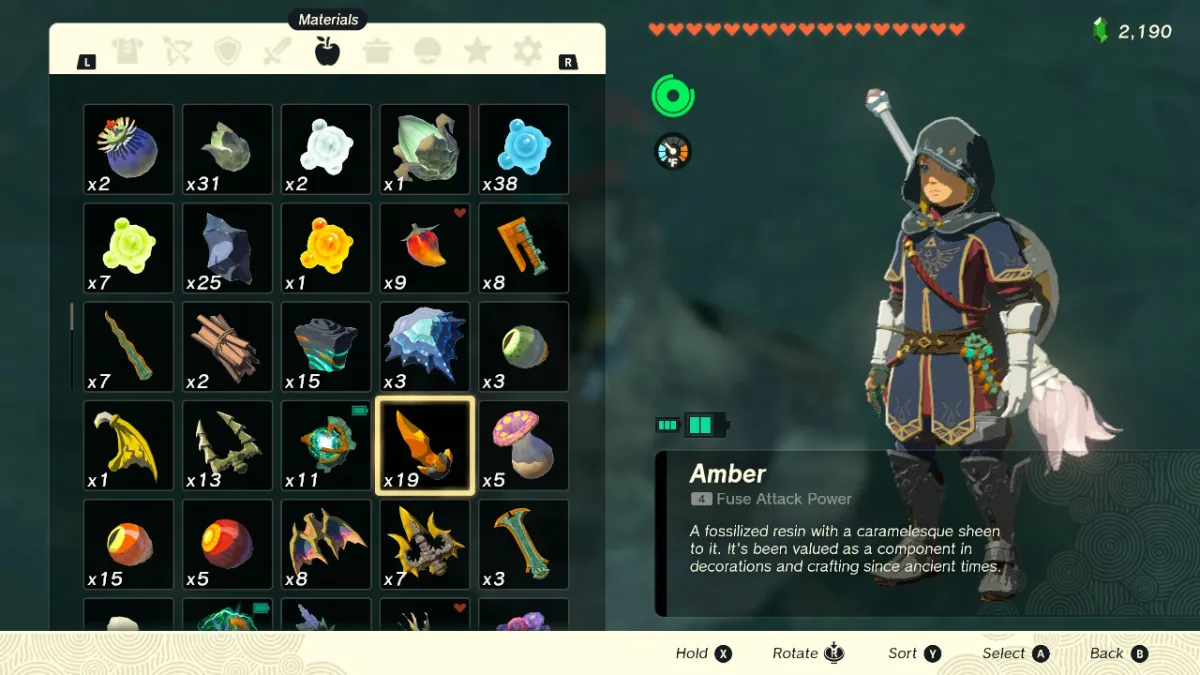Whether it’s baffling questions or madcap rules, The Password Game is the ultimate brain teaser taking social media by storm. Rule 16 is among the most challenging, requiring your password to “include the best move in algebraic chess notation.” This guide explains what on earth an algebraic chess notation is and a super simple solution to this puzzle if you don’t happen to be a chess genius — which you likely aren’t, considering you clicked on this article. Don’t worry; neither am I!
Password Game Rule 16 Solution

The easiest solution to Rule 16 in The Password Game is using the website Next Chest Move. Drag the pieces on and off the board to replicate the one seen in The Password Game, select Calculate Next Move, and the machine will spit out the letter and number (algebraic chess notation) you need to incorporate into your password.
If that doesn’t seem to work, make sure you’ve selected the correct Active Color in Next Chess Move based on the text displayed at the bottom of the board in The Password Game. It’s set to White to move by default, but you may need to change it to Black to move.
Remember, since your notation will contain at least one number, you must alter your password to adhere to rule 5. I had to reset my captcha, as it was impossible for the numbers given to add up to 25.
The chess scenario presented in The Password Game is entirely different from player to player, so unfortunately, we can’t give you a direct answer. Thankfully, Next Chess Move (and similar tools) help those of us who can’t tell their rook from their pawn.
Related: Password Game Rule 23 Guide: How to Feed Paul and Keep Him Alive
What is an Algebraic Chess Notation?
The complex instruction that “your password must include the best move in algebraic chess notation” frazzled my brain when I first encountered it. Figuring out the current moon phase? Not a problem. Chess? That’s where I draw the line.

After some thorough research, it turns out that algebraic chess notation is a method of communicating chess moves. The answer to Rule 16 in my game, which you can see a screenshot of above, was Nf7+. This was because the knight (N) moved to coordinate f7 and checked (+).
While Next Chess Move generates the algebraic chess notation for you, learning and applying yourself can be fun if you know how to play chess. To make things easier, you can find the basics of algebraic notation below. As basic as chess can be, anyway.
Piece Names
- King ♚ = K
- Queen ♛ = Q
- Rook ♜= R
- Bishop ♝ = B
- Knight ♞ = N
- Pawn ♟ = Absence of a letter
Moving a piece is signified by the name of the piece, followed by its coordinate. For pawns, it’s simply the name of the coordinate—for example, the classic opening of d4.
If there is more than one of the same piece that can legally move, you must write the piece’s current letter coordinate before your move—for example, Rdf8 for a rook moving from d8 to f8.
Moves
- Move =
- Check = +
- Checkmate = ++
- Capture = x
- Kingside castling = 0-0
- Queenside castling = 0-0-0
That’s enough chess lessons for one day; it’s time to create a password. Check out our page on The Password Game, which is regularly updated with solutions, tips, and tricks.












Published: Jul 3, 2023 08:45 pm